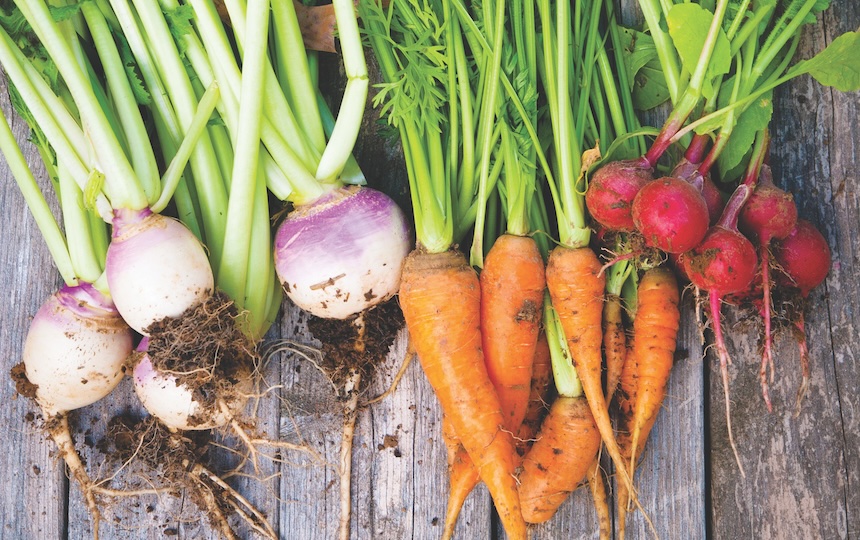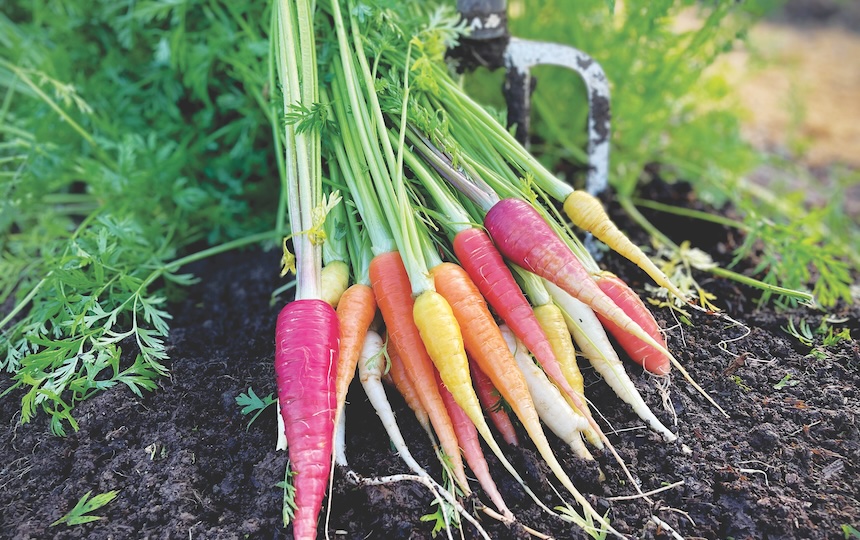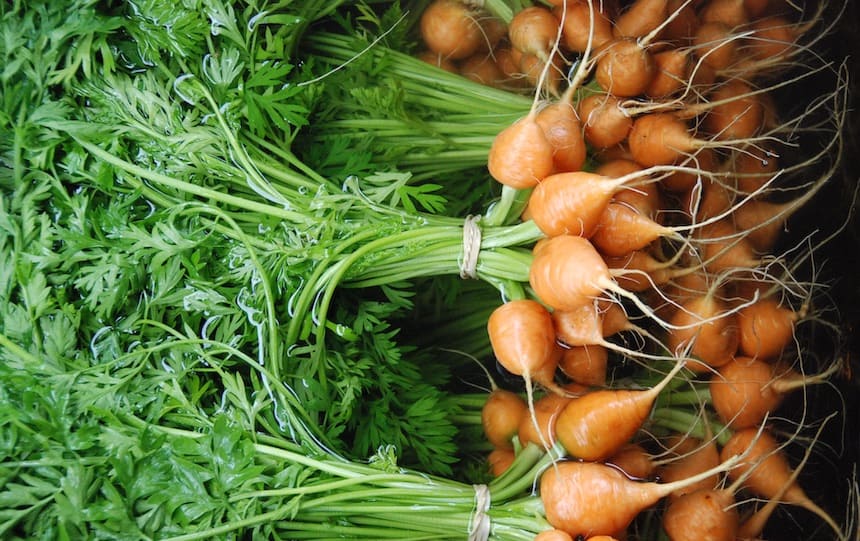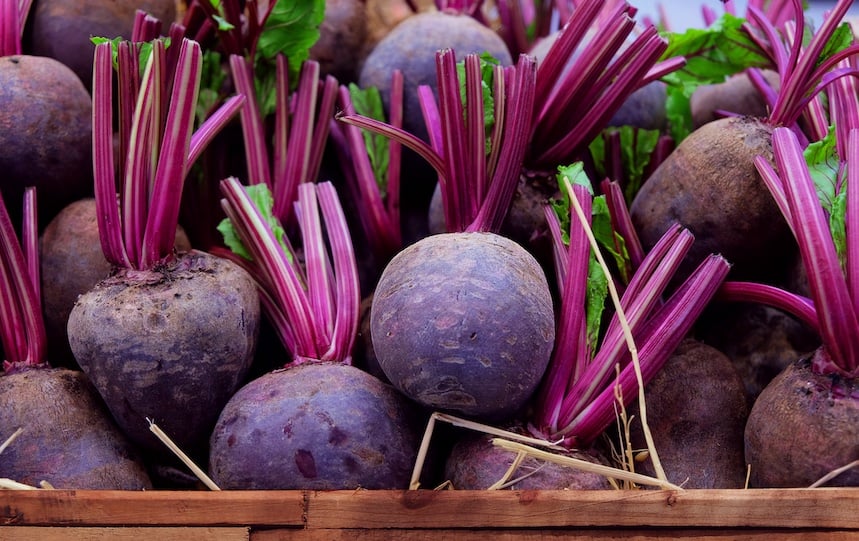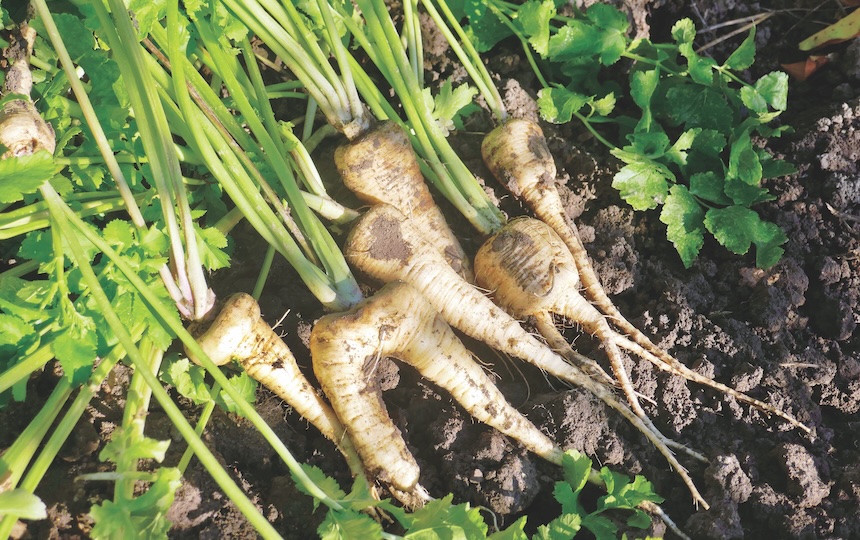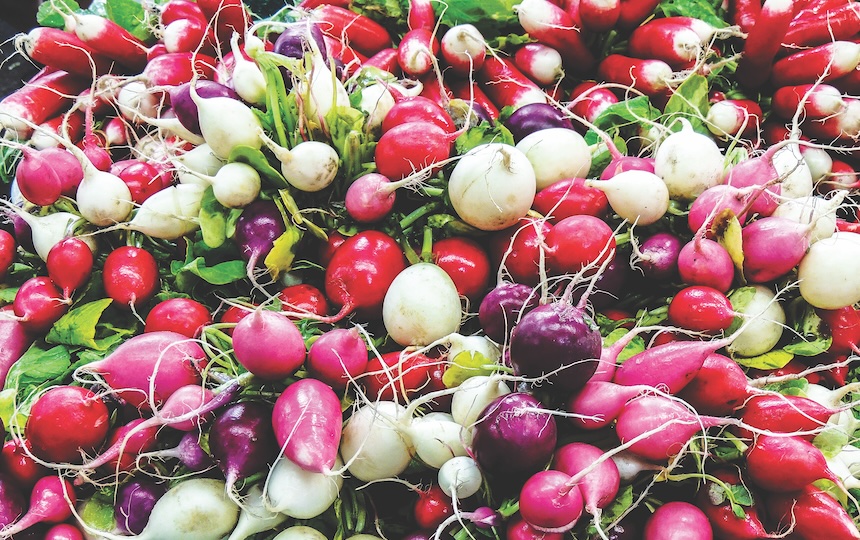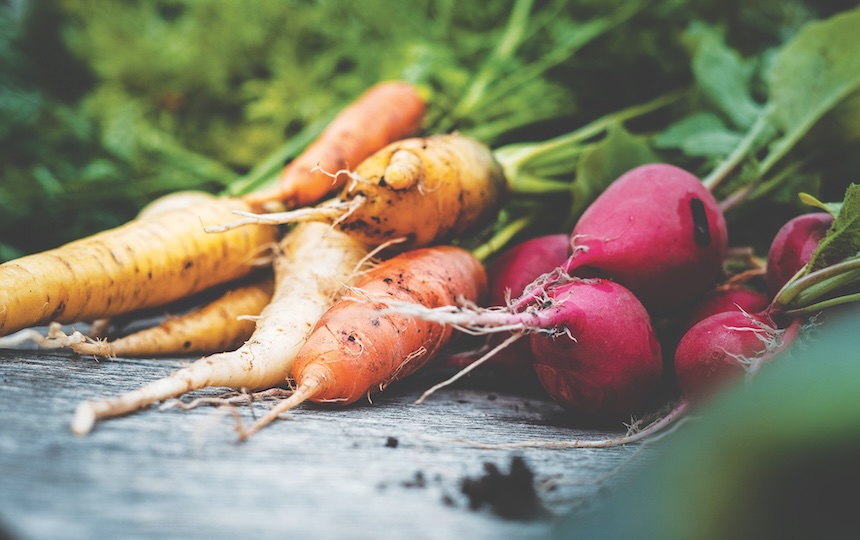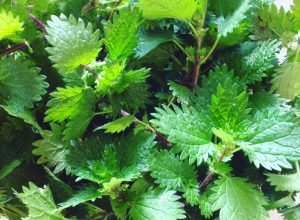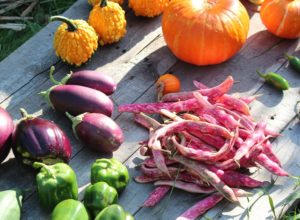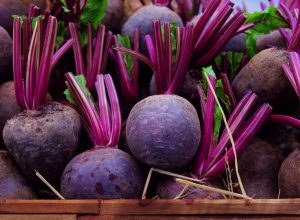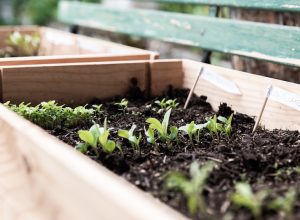Root vegetables like carrots, beetroots, parsnips and radishes are staples in our kitchens and vegetable gardens. Let’s dig down into how to grow your own bunch of crunchy carrots or bountiful beets.
Root crops are versatile vegetables that produce an edible swollen root or base of stem, either below or at the soil surface. Interestingly, not all are from the same family – swedes, turnips and radishes are from the Brassica family, beetroot is a relative of silverbeet in the Amaranthaceae family, and carrot and parsnip are part of the huge Apiaceae or Umbelliferae family.
All prefer to grow in full sun (at least six hours) and have similar requirements when it comes to soil and climate. They have provided a valuable food source of minerals, carbohydrates and fibre as staple crops throughout history and, with only a little effort, could be a tasty addition to your vegetable garden too.
Soil is key to growing root vegetables
Root crops prefer loose, friable soil, free from large rocks or clumps of organic matter, and this is key to their success. It can be tricky to cultivate when also trying to preserve your soil structure, so a good way forward is to aerate your soil by gently lifting or levering it with a fork rather than actively turning the soil over. This helps to break up any compaction and creates a free-draining structure while minimising soil disturbance.
Root vegetables prefer a pH range of 6.5–7.5 with parsnips, turnips and swedes preferring the slightly acidic pH of 6.5.
They love a good amount of organic matter and you should plan to apply plenty to your soil at least a month before sowing seeds.
Most root vegetables (except potatoes) have a low nitrogen requirement, so avoid very fresh compost and high-nitrogen fertiliser like chicken manure, as this will encourage leaf growth often at the expense of root growth and may even result in poorly formed vegetables. A more balanced fertiliser like blood and bone or an aged compost is a better choice.
6 root vegetables to grow in your garden
Beetroot
Beetroot is an easy-to-grow vegetable for any climate. In tropical and subtropical areas, grow it anytime outside the hottest and wettest months of the year; in the southern half of Australia, sow it from spring to autumn.
(Check out our recipe for spiced beetroot pickle here.)
Carrots
Carrots yield a big harvest in a small space, so are perfect in the home garden. Grow them in the cooler months in tropical areas and spring to autumn in milder climates. Carrots can seem like a challenge to some gardeners, but the key is good soil preparation and careful seed germination.
Parsnips
Parsnips have similar growing requirements to carrots, though they are less sensitive to nitrogen. Seeds need to be really fresh, kept damp after sowing and are quite slow to germinate (up to four weeks), so using a similar technique as carrots is advised. They take up to 20 weeks to be fully mature and need a dedicated space in your garden beds, though they yield a lot for the space they take up.
Radishes
Radishes are the quickest and easiest vegetable to grow. They can be grown in most climates year-round, though germination and maturation take longer in very hot or cold weather. Radish seeds should be sown direct at a depth of around one centimetre, five centimetres apart and covered lightly with soil. Seeds can germinate in as little as a few days and be ready to harvest in just a few weeks – so they’re a great quick crop in between younger plants in your garden.
(Check out our recipe for fermented radish pickle here!)
Turnips and swedes
Turnips and swedes are cool season crops with similar growing requirements. Seeds should be sown in late summer-autumn directly into the garden, by sprinkling into very shallow furrows and lightly covering with soil. They are less fussy about being constantly damp than carrot seeds, and seedlings will emerge in one to two weeks.
Despite preferring full sun, they can be grown in part shade (at least three hours of sunlight per day) and make a handy understory in garden beds with larger annual or perennial plants.
Want to know more about growing root vegetables?
In Issue #31 of Pip Magazine, we bring you a complete guide to growing root vegetables.
- We cover how to get your soil right to set yourself up for root vegetable growing success.
- Explore the top six root vegetables to grow in more detail; and,
- Provide info on how to grow potatoes and sweet potatoes.
You can access this article online here as part of our digital subscription offering, or subscribe to the print version of Pip Magazine here.

